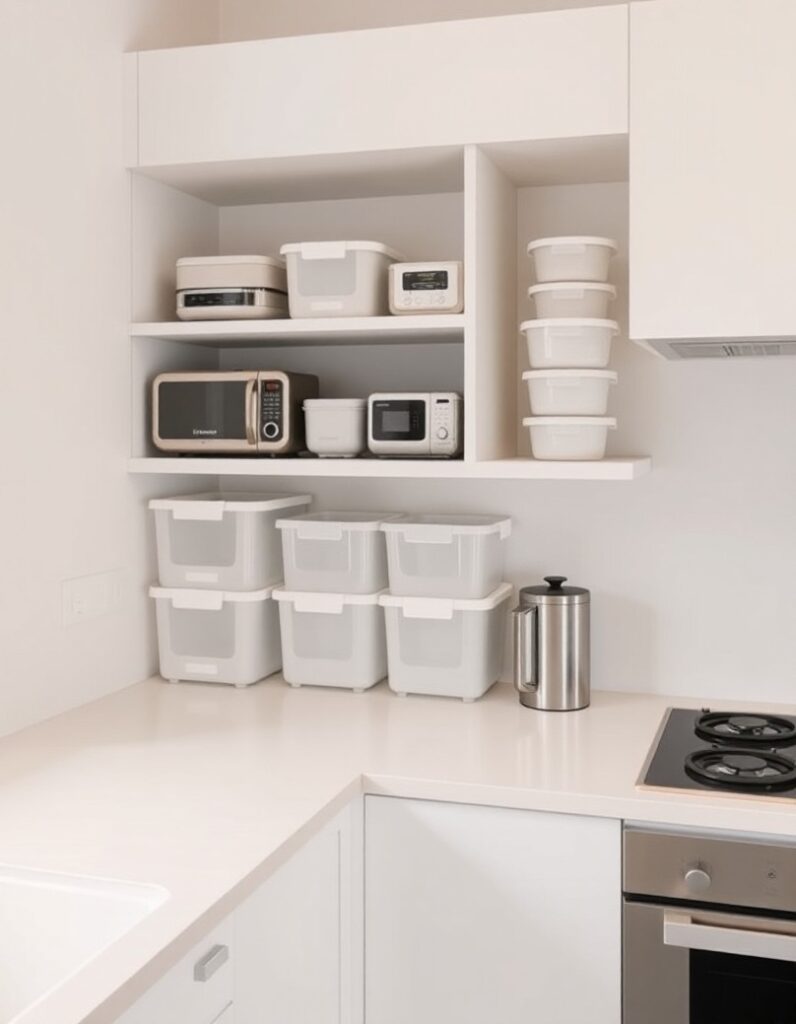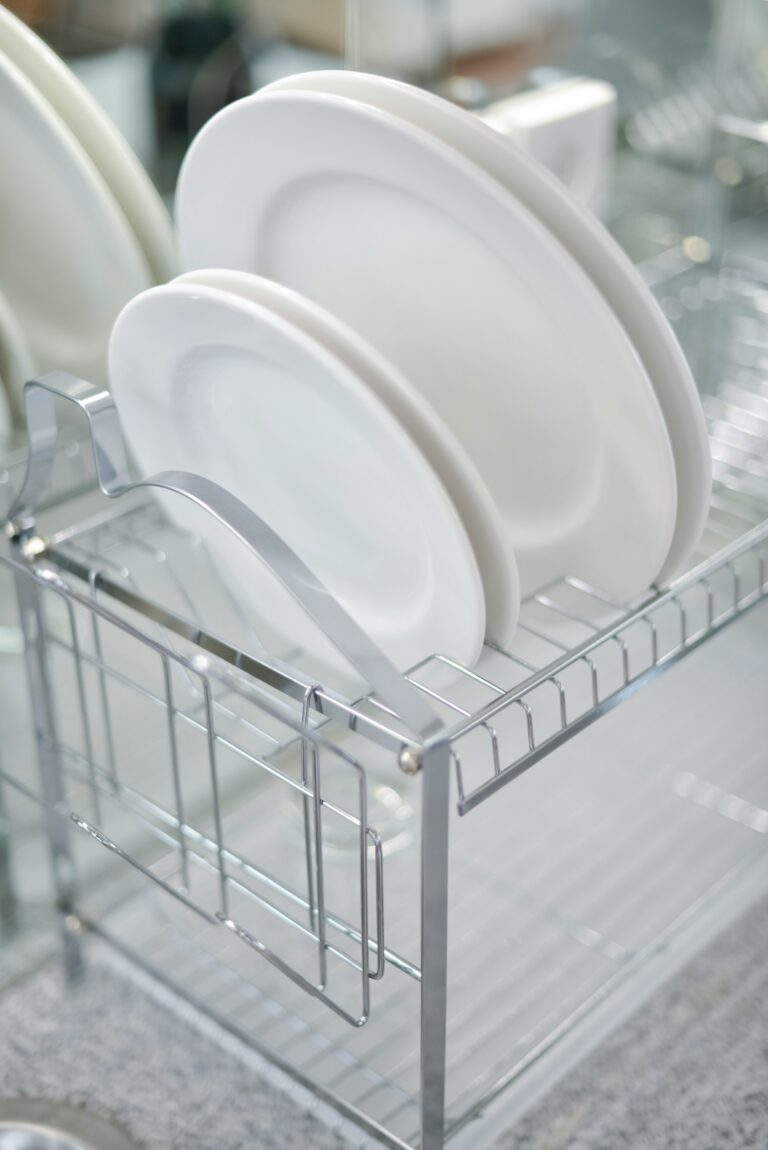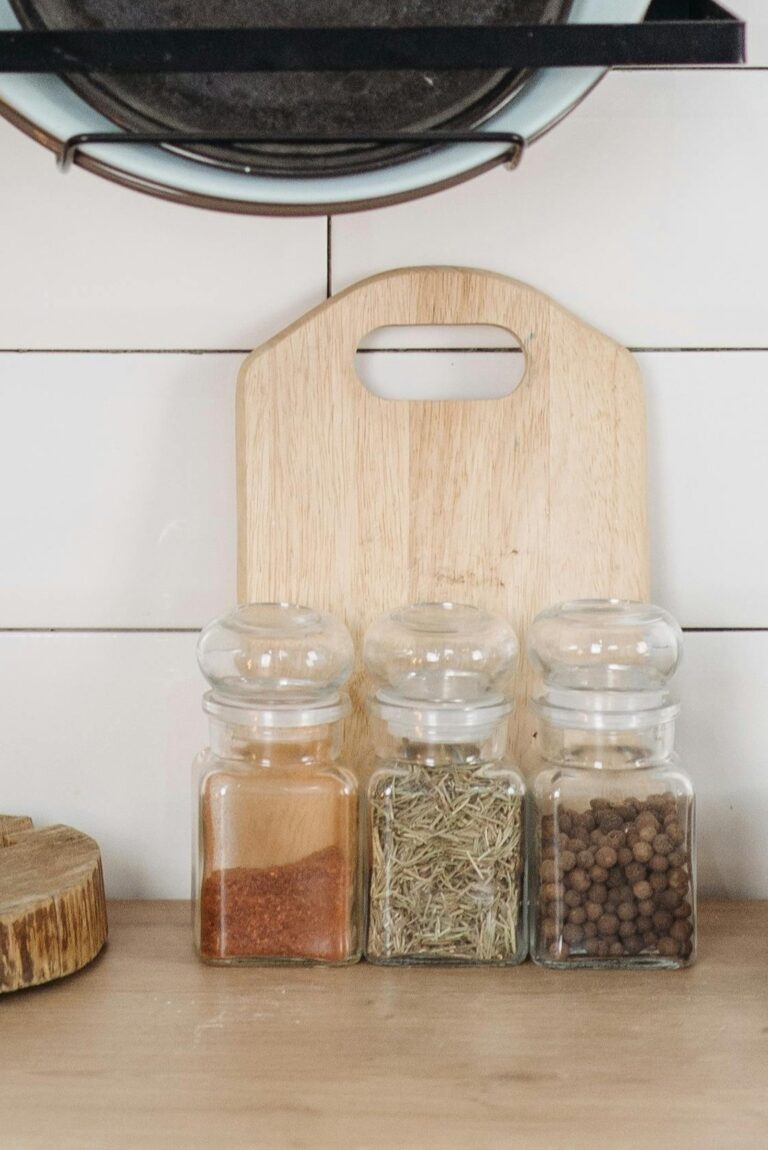Countertop appliances can take up valuable space even when they sit unused for weeks. Finding the right storage for rarely used appliances can help you reclaim counter space while keeping your gadgets accessible. These solutions might make your kitchen feel more functional and organized.
Why Countertop Appliance Storage Matters

The challenge with storing kitchen appliances comes down to balance. You want them accessible enough to actually use, but not taking up prime real estate on your counters every day.
When appliance clutter builds up, it can make cooking and meal prep feel more chaotic than it needs to be.
1. Use Deep Cabinet Shelves for Rarely Used Appliance Storage
Lower cabinets with deep shelves can work well for heavier items like stand mixers or food processors. These appliances tend to be sturdy enough to slide in and out without much hassle.
Pull-out shelving units can make access easier if you’re dealing with tight spaces.
Keep the items you use most often toward the front. Store seasonal appliances, like ice cream makers, toward the back where they won’t get in the way.
2. Install Appliance Garages for Countertop Appliance Storage
Appliance garages are cabinet spaces built into your counter area with roll-up or hinged doors. They can hide toasters, coffee makers, or blenders while keeping them plugged in and ready to use.
This setup works well if you have the counter depth to spare. The doors close to create a clean look, but your appliances stay within arm’s reach.
Some homeowners add outlets inside the garage to avoid visible cords.
Also Read: 6 Ways to Organize Deep Drawers That Turn Into Catch-All Spaces
3. Create a Pantry Zone for Small Appliance Organization
If you have a walk-in or reach-in pantry, dedicating one shelf to small appliance storage can free up kitchen counter space significantly. This approach works especially well for items like waffle makers, slow cookers, or bread machines.
Label the shelf or use bins to keep cords contained. Velcro ties or twist ties can prevent tangled messes.
Consider weight distribution if your shelves are adjustable. Heavier appliances should sit on lower shelves to avoid sagging or safety issues.
4. Try Rolling Carts for Flexible Kitchen Appliance Storage Solutions
A rolling cart can offer mobility and extra storage in one. Park it in a corner or closet when not in use, then wheel it out when you need access to your appliances.
Look for carts with multiple tiers to stack smaller items. This can work well for things like hand mixers, blenders, or electric kettles.
The cart can also double as a prep station if you add a cutting board on top.
Read More: 6 Solutions for Reusable Containers That Don’t Nest Properly
5. Repurpose Upper Cabinets for Storing Kitchen Gadgets
Upper cabinets aren’t just for dishes. If you have space above your fridge or stove, those areas can work for appliances you use only occasionally.
Step stools or small ladders make retrieval safer and easier. Just keep in mind that this spot works best for lighter items, not heavy mixers or processors.
Group similar items together so you’re not searching through multiple cabinets.
6. Use Open Shelving for Stylish Appliance Cabinet Organization
Open shelving can turn your appliances into part of your kitchen decor if they’re attractive enough. Vintage-style mixers, copper kettles, or colorful blenders can add personality to your space.
This option works best if you don’t mind a bit of dust accumulation. Wipe down the appliances occasionally to keep them looking fresh.
Arrange them by height or color to create visual interest without feeling cluttered.
7. Store Rarely Used Appliances in a Basement or Garage
If you have appliances that only come out once or twice a year, basement or garage storage might make sense. Items like specialty baking tools can live outside the kitchen without causing inconvenience.
Use plastic bins with labels to protect them from dust or moisture. Climate-controlled spaces work better for electronics to avoid damage from extreme temperatures.
Check on stored items periodically to make sure they’re still in working condition.
Also Read: How To Organize Kitchen Cabinets By Frequency Of Use
8. Add Drawer Inserts for Smaller Kitchen Appliance Storage
Deep drawers can accommodate hand mixers, immersion blenders, or mini food choppers with the right inserts. Custom or adjustable dividers can keep everything in its place.
This method can help you avoid the jumbled mess that happens when small items get tossed together. Each appliance gets its own compartment.
Keep instruction manuals and attachments in the same drawer if there’s room.
9. Utilize the Top of Your Refrigerator for Unused Appliance Storage
The space above your refrigerator often goes unused, but it can hold lighter appliances that don’t get daily use.
Access can be tricky, so this spot works best for things you truly use infrequently. A sturdy step stool can help with retrieval.
Decorative baskets or bins can make the area look more intentional and keep appliances from sliding around.
What to Avoid When Organizing Countertop Appliances
Don’t stack heavy appliances on top of each other without proper support. This can lead to scratches, dents, or even broken components.
Avoid storing appliances with damp parts or dirty surfaces. Clean and dry everything before putting it away to prevent mold or odors.
Skip overly complicated storage systems that require too many steps to access what you need. If retrieval becomes a hassle, you might stop using the appliance altogether.
FAQ About Storage for Rarely Used Appliances
Where should I store kitchen appliances I don’t use often?
Lower cabinets, pantry shelves, or rolling carts can work well for occasional-use appliances. The key is balancing accessibility with space efficiency.
Choose locations based on how often you realistically use each item. Monthly-use appliances can stay in the kitchen, while annual-use items can move to a basement or garage.
How do I organize countertop appliances to save space?
Appliance garages, deep drawers, or vertical shelving can help you organize without sacrificing counter space. Group similar items together and keep cords tidy with ties or clips.
Consider which appliances you actually use weekly versus those that sit idle. The daily-use items might earn their spot on the counter, while others can be stored away.
What’s the best way to store small kitchen appliances?
Store them clean, dry, and in a location that matches their frequency of use. Use bins, dividers, or dedicated shelving to prevent damage and tangling cords.
Labeling storage areas can help other household members find and return items to the right spot. This can keep your system functioning smoothly over time.
Conclusion
Smart storage for rarely used appliances can help you make better use of your kitchen space without giving up the tools you value. Whether you choose cabinets, carts, or creative shelving, the goal is finding a system that matches your cooking habits and space constraints.
Start by assessing which appliances you truly use regularly and which ones can move to less prominent spots. A bit of reorganization might help your kitchen feel more functional and less cluttered.



